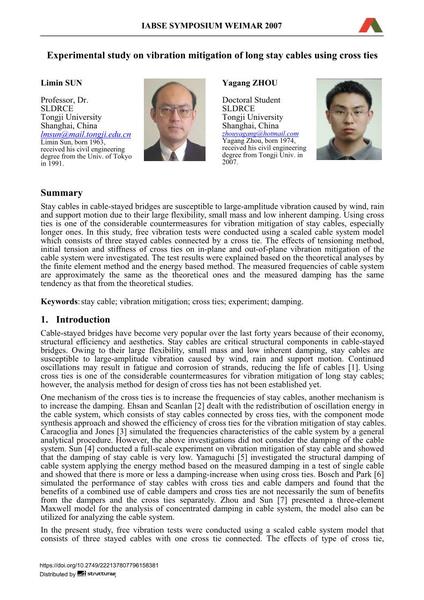Experimental study on vibration mitigation of long stay cables using cross ties

|
|
|||||||||||
Bibliographic Details
| Author(s): |
Limin Sun
Yagang Zhou |
||||
|---|---|---|---|---|---|
| Medium: | conference paper | ||||
| Language(s): | English | ||||
| Conference: | IABSE Symposium: Improving Infrastructure Worldwide, Weimar, Germany, 19-21 September 2007 | ||||
| Published in: | IABSE Symposium Weimar 2007 | ||||
|
|||||
| Page(s): | 382-383 | ||||
| Total no. of pages: | 8 | ||||
| Year: | 2007 | ||||
| DOI: | 10.2749/222137807796158381 | ||||
| Abstract: |
Stay cables in cable-stayed bridges are susceptible to large-amplitude vibration caused by wind, rain and support motion due to their large flexibility, small mass and low inherent damping. Using cross ties is one of the considerable countermeasures for vibration mitigation of stay cables, especially longer ones. In this study, free vibration tests were conducted using a scaled cable system model which consists of three stayed cables connected by a cross tie. The effects of tensioning method, initial tension and stiffness of cross ties on in-plane and out-of-plane vibration mitigation of the cable system were investigated. The test results were explained based on the theoretical analyses by the finite element method and the energy based method. The measured frequencies of cable system are approximately the same as the theoretical ones and the measured damping has the same tendency as that from the theoretical studies. |
||||
| Keywords: |
stay cable damping vibration mitigation cross ties experiment
|
||||
